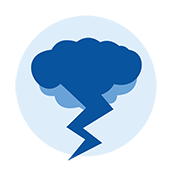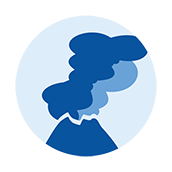Learn about tsunamiHe ako mō te ngaru taitoko
 A tsunami is a series of waves caused by large earthquakes. All of New Zealand’s coast line is at risk of tsunami. A tsunami wave can grow to become a fast moving wall of water.
A tsunami is a series of waves caused by large earthquakes. All of New Zealand’s coast line is at risk of tsunami. A tsunami wave can grow to become a fast moving wall of water.
On this page
What is a tsunami?
Tsunami is a Japanese word meaning ‘harbour wave’. A tsunami is a series of fast travelling waves caused by a large disturbance in the sea or on the ocean floor. An earthquake, landslide, volcanic eruption or meteorite can cause the disturbance. The waves can be as much as an hour apart. They can travel thousands of kilometres across the oceans at speeds of up to 800 kilometres per hour.
A tsunami may not be noticed as it crosses deep oceans, but it loses speed and gains height when it reaches shallow water. Large waves up to 15 metres or more in height can come crashing onto the land. The effects can be worse in narrow bays and inlets.
Tsunami waves can be rapidly-moving tides with very strong currents that can wash people and objects out to sea. They can also be large breaking waves that can cause major damage when they hit the shore.
Big earthquakes in or near New Zealand can cause tsunami. If you feel an earthquake that lasts longer than one minute, or one that is so strong it is hard to walk around or stand up, a tsunami could follow it. Sometimes when tsunami waves arrive on shore, it looks like the water sucks out before rushing back in. Or the waves can make unusual noises like a jet engine. But, these don’t always happen.
If you are at the coast and experience any of the following, move immediately to the nearest high ground, or as far inland as you can. Walk or bike if possible.
- Feel a strong earthquake that makes it hard to stand up, or a weak rolling earthquake that lasts a minute or more.
- See a sudden rise or fall in sea level.
- Hear loud and unusual noises from the sea.
Remember Long or Strong, Get Gone.
What do we do before a tsunami?
- Talk with your family and prepare an emergency plan.
- Your local Civil Defence Group has tsunami evacuation zone maps and regional advice. Make sure you know where to go, whether you are at home, at work or out and about.
What do we do during a tsunami?
- Move immediately to the nearest higher ground, or as far inland as you can. Walk or bike if possible.
- Do not go sightseeing. Never go to the shore to watch for a tsunami.
- Stay away from at-risk areas until the official all-clear is given.
Long or Strong, Get Gone
Remember, Long or Strong, Get Gone.
Drop, Cover and Hold during the shaking. Protect yourself from the earthquake first.
As soon as the shaking stops, move immediately to the nearest high ground or as far inland as you can out of tsunami evacuation zones.
Download Long or Strong, Get Gone Posters
What do we do after a tsunami?
- Stay calm.
- Listen to and follow instructions from adults or the radio.
- Help others who may need it, if you can.
Find out more about what to do before, during and after a tsunami.
Home learning
 Identify safe places close to your home and school by checking your local Civil Defence group’s tsunami evacuation zone maps.
Identify safe places close to your home and school by checking your local Civil Defence group’s tsunami evacuation zone maps.
Ask an adult to help you take a picture of a safe place that you can share with your neighbours, class, etc.
Make a plan with your family to get through an emergency. Think about the things you need every day and work out what you would do if you didn't have them.
Make your plan — print it out, stick it on the fridge and make sure everyone knows the plan.
Find out about past tsunami that have happened in your region.
Learning resources

Learn about tsunami that have reached New Zealand since humans arrived.

Find learning experiences that focus on floods and tsunami.

Learn about shoaling and how it works.

Watch this video on tsunami produced by National Geographic.

Visit this useful site with animations showing the movement of tsunami waves.

Watch this video from GNS Science explaining how tsunami are formed and the damage they can cause.

Read a New Zealand perspective on tsunami on Te Ara, the Encyclopedia of New Zealand.

Watch these YouTube videos from GeoNet experts answering questions about natural hazards.
Learn about emergencies
Natural hazards can be frightening. They can strike at any time and often without warning. Explore the types of emergencies below and learn better ways to prepare.




